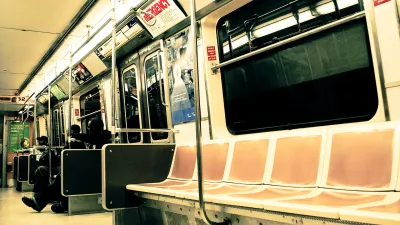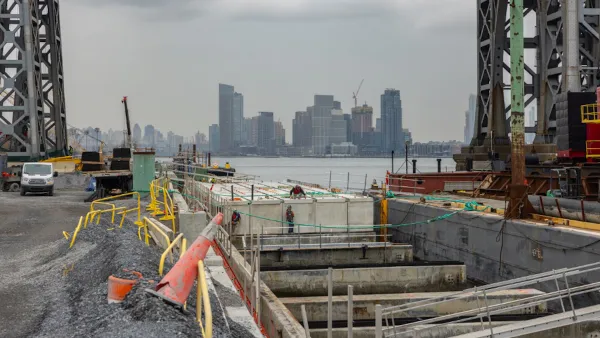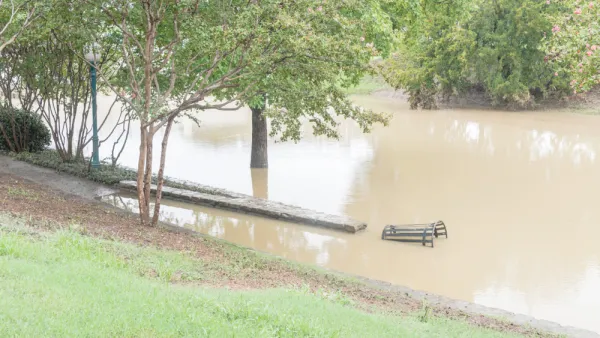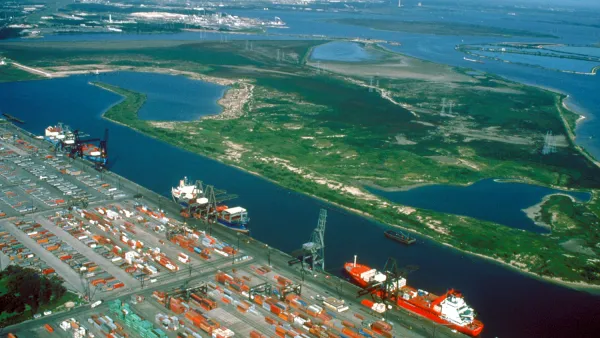While cities race to protect their subway infrastructure from more intense flooding, some experts argue that more investment is needed in more resilient street-level infrastructure.

"Subway systems around the world are struggling to adapt to an era of extreme weather brought on by climate change," write Hiroko Tabuchi and John Schwartz. "Their designs, many based on the expectations of another era, are being overwhelmed, and investment in upgrades could be squeezed by a drop in ridership brought on by the pandemic." In cities around the world, aging subway systems are being overwhelmed by worsening floods. "In New York, the Metropolitan Transportation Authority has invested $2.6 billion in resiliency projects since Hurricane Sandy swamped the city’s subway system in 2012, including fortifying 3,500 subway vents, staircases and elevator shafts against flooding."
Yet some experts argue that protecting subways may be a misguided approach. "With more extreme flooding down the line, protecting subways all of the time will be impossible, they say. Instead, investment is needed in buses and bike lanes that can serve as alternative modes of public transportation when subways are flooded. Natural defenses could also provide relief. Rotterdam in the Netherlands has grown plants along its tramways, enabling rainwater to be soaked up by the soil, and reducing heat." Bernardo Baranda Sepúlveda, a Mexico City-based researcher at the Institute for Transportation and Development Policy, says that "[s]treet-level light rail, bus systems and bicycle lanes aren’t just less exposed to flooding, they are also cheaper to build and easier to access."
FULL STORY: Climate Crisis Turns World’s Subways Into Flood Zones

National Parks Layoffs Will Cause Communities to Lose Billions
Thousands of essential park workers were laid off this week, just before the busy spring break season.

Retro-silient?: America’s First “Eco-burb,” The Woodlands Turns 50
A master-planned community north of Houston offers lessons on green infrastructure and resilient design, but falls short of its founder’s lofty affordability and walkability goals.

Delivering for America Plan Will Downgrade Mail Service in at Least 49.5 Percent of Zip Codes
Republican and Democrat lawmakers criticize the plan for its disproportionate negative impact on rural communities.

Test News Post 1
This is a summary

Test News Headline 46
Test for the image on the front page.

Balancing Bombs and Butterflies: How the National Guard Protects a Rare Species
The National Guard at Fort Indiantown Gap uses GIS technology and land management strategies to balance military training with conservation efforts, ensuring the survival of the rare eastern regal fritillary butterfly.
Urban Design for Planners 1: Software Tools
This six-course series explores essential urban design concepts using open source software and equips planners with the tools they need to participate fully in the urban design process.
Planning for Universal Design
Learn the tools for implementing Universal Design in planning regulations.
EMC Planning Group, Inc.
Planetizen
Planetizen
Mpact (formerly Rail~Volution)
Great Falls Development Authority, Inc.
HUDs Office of Policy Development and Research
NYU Wagner Graduate School of Public Service





























